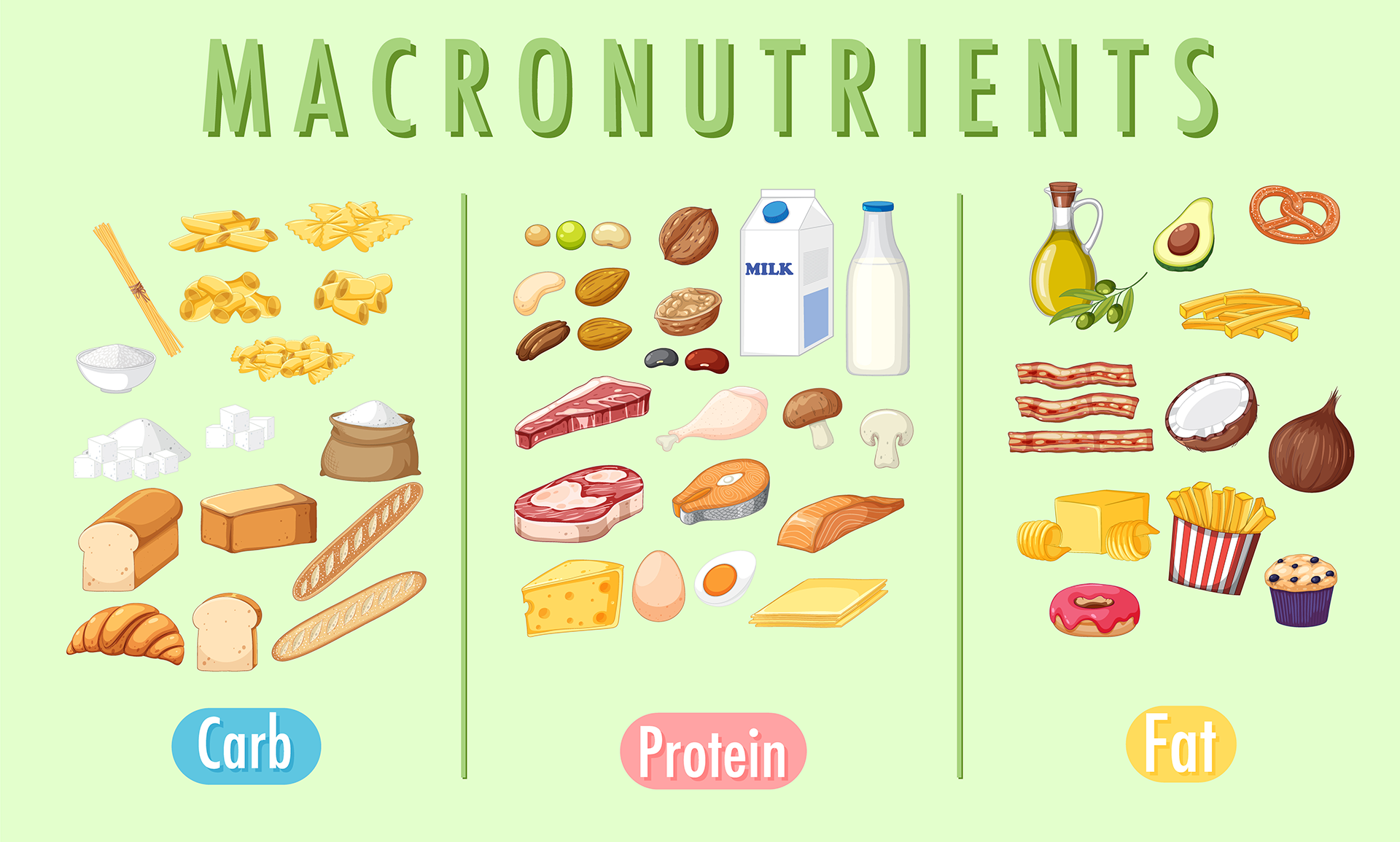In our quest for optimal mental health and physical strength, the foods we eat play a vital role in total body wellness. Central to this is understanding macronutrients: the vital components that our bodies need in large amounts to function efficiently. These “macros,” namely carbohydrates (carbs), proteins, and fats, form the foundation of our dietary needs. Let’s delve into understanding macros and how balancing carbs, proteins, and fats can lead to better health.
Table of Contents
Carbohydrates: The Body’s Primary Energy Source

Carbohydrates, often referred to as carbs, are the body’s main source of energy. They are broken down into glucose (sugar) before being absorbed into the bloodstream. The two main types of carbs are:
- Simple Carbohydrates: Quickly digested and provide rapid energy. Examples include fruits, milk, and refined sugars.
- Complex Carbohydrates: Take longer to digest, providing sustained energy. Examples are whole grains, beans, and vegetables.
For a balanced diet, it’s vital to prioritize complex carbs as they offer additional nutritional benefits like fiber and essential vitamins.
Proteins: Building Blocks of the Body
Proteins are the building blocks of our muscles, skin, enzymes, and hormones. They play an indispensable role in repairing and building body tissues. Dietary protein is broken down into amino acids, which are then utilized by the body for various functions. While our bodies can produce certain amino acids, nine “essential” amino acids must be obtained through our diet. Key sources of protein include:

- Animal Sources: Meat, poultry, fish, and dairy.
- Plant Sources: Legumes, grains, and nuts.
It’s essential to recognize that not all protein sources are created equal. When it comes to plant proteins, many often lack certain essential amino acids, which means they aren’t classified as “complete proteins.” A common observation is people feeling fatigued or running out of energy before lunch. This midday slump can sometimes be attributed to a breakfast high in carbohydrates or reliant on inferior protein sources.
Moreover, individuals who depend solely on plant proteins might find muscle-building slightly more challenging due to the absence of certain amino acids in their diet. However, this doesn’t imply that plant proteins should be avoided. Rather, it suggests the importance of incorporating complete proteins as the cornerstone of one’s diet.
Vegetarians do have options. Several plant-based options, such as quinoa, boast a complete amino acid profile, making them excellent choices for those seeking a balanced dietary protein source.
For complete breakdown on protein, we highly recommend you watch Dr. Eric Berg’s video “Protein Is Not a Protein.”
Fats: More than Just Energy Reserves
Often misunderstood, fats are crucial for various body functions, from energy storage to the absorption of fat-soluble vitamins (A, D, E, and K). Fats can be categorized as:
- Saturated Fats: Found primarily in animal products. Consumed in moderation.
- Unsaturated Fats: Found in plants and fish. Includes monounsaturated and polyunsaturated fats, which are considered beneficial for heart health.
- Trans Fats: Mostly found in processed foods and should be avoided due to their negative health implications.

Macronutrient Ratios for Health

Balancing carbs, proteins, and fats is not a one-size-fits-all formula. The ideal macronutrient ratio varies depending on individual goals, activity levels, and health conditions. However, general recommendations suggest:
- Carbohydrates: 45-65% of total daily calories.
- Proteins: 10-35% of total daily calories.
- Fats: 20-35% of total daily calories.
Adjusting these ratios can cater to specific needs. For instance, someone aiming for muscle growth might increase their protein intake, while someone following a ketogenic diet would reduce their carb intake and increase fats. See “How to Calculate Macros – Fat Loss and Muscle Gain.” There are also some great macro calculators out there. We recommend “Macro Calculator” by Healthy Eater.
Conclusion:
Understanding macronutrients is the first step towards crafting a diet that aligns with your health goals. While carbs fuel our daily activities, proteins repair and build, and fats support numerous bodily functions. By recognizing the importance of each and balancing carbs, proteins, and fats, we pave the way for a nourished and vibrant life.
Understanding Macros is not to be confused with micronutrients, which we will cover in a future post.



